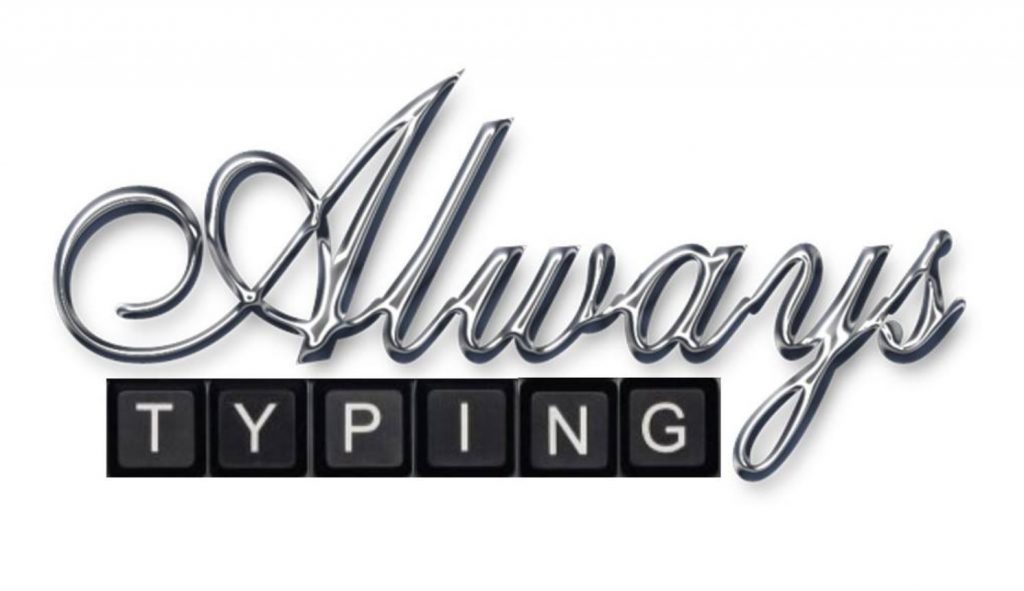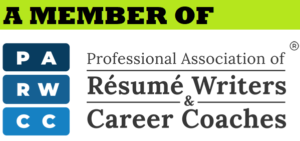In today’s competitive job market, securing a new job often entails embarking on a journey that spans around six weeks—from the initial application submission to the long-awaited offer letter. However, as candidates edge closer to the finish line, there’s a crucial juncture that demands their attention: the employment background check. This meticulous process serves as the final gateway, determining the bridge between aspiration and accomplishment. Employers recognize that making the right hiring decisions is paramount, as each addition to their team forms an integral piece of the larger organizational puzzle. With a plethora of candidates vying for the same opportunities, employers are investing more than ever in methods to ensure that their selections are not just proficient but also a seamless fit within their organizational fabric. Background checks have emerged as a strategic tool in this endeavor, enabling employers to gain a more holistic understanding of candidates beyond their resumes and interviews. The process of conducting employment background checks serves as an instrumental component in enabling employers to assess candidates in terms of trustworthiness, reliability, and alignment with company values. The employment background check, once perceived as a formality, has now transformed into a crucial determinant of a candidate’s trajectory. The journey doesn’t end with a job offer; it commences with the trust an employer places in their new hire’s potential to positively impact the company’s journey ahead. Understanding Employment Background Checks Employment background checks scrutinize various aspects of your history, including employment, credit, driving records, and criminal past. Honesty on your job application is crucial, especially regarding job dates and titles. Even small discrepancies can impact your candidacy. Employment History Even seemingly minor discrepancies can have substantial implications for an applicant’s credibility. Consider a scenario where an applicant extends the duration of a previous job by a few months to fill a gap in their resume. While this might appear innocuous, such embellishments can cast a shadow of doubt over an applicant’s integrity. Why is precision in employment history so vital? Employers often view your job history as a testament to your reliability and consistency. A candidate who meticulously documents their work experience showcases qualities of thoroughness and conscientiousness, traits that resonate positively with prospective employers. The ATS Detective: How Applicant Tracking Systems Unveil Discrepancies Enter the realm of Applicant Tracking Systems (ATS)—software employed by many companies to streamline their recruitment processes. These digital detectives scrutinize resumes for keywords, qualifications, and, yes, employment details. When it comes to dates, ATS systems are more than just a digital calendar; they are the gatekeepers of accuracy. ATS systems are designed to highlight inconsistencies, making it increasingly challenging for discrepancies to fly under the radar. If an applicant’s claimed employment dates don’t align with the data inputted, these systems raise red flags that can trigger further scrutiny. This means that not only is precision essential for portraying yourself accurately, but also for navigating through these automated gatekeepers. Applicants often underestimate the ATS’s role in the selection process. In a competitive job market, where numerous resumes vie for attention, ATS systems serve as the first line of defense. By providing accurate and precise employment history, you’re ensuring that your resume passes through this initial screening hurdle and lands in the hands of hiring managers. Credit History The examination of credit history during an employment background check goes beyond a mere financial inquiry—it offers employers a glimpse into your financial responsibility and decision-making skills. While credit scores are not typically included, this inspection provides valuable insights, particularly for roles with financial responsibilities, access to sensitive data, or decision-making authority on behalf of the company. Roles with Financial Responsibilities For positions that involve financial management, such as accountants, financial analysts, or roles directly handling transactions, credit history becomes a pivotal consideration. Employers seek candidates who can aptly manage financial matters, both on a personal and professional level. A positive credit history implies a track record of managing finances prudently, which can extend to fiscal responsibility within the organization. Safeguarding Sensitive Data: Trust and Confidentiality In an era defined by data breaches and cyber threats, protecting sensitive information is paramount. Roles that involve access to confidential data, customer information, or trade secrets require individuals of utmost integrity. Employers recognize that financial pressures can potentially sway an individual’s decisions. A thorough credit history examination helps ensure that the candidate’s financial standing is not vulnerable to outside influence, safeguarding against potential security breaches. Making Crucial Financial Decisions: Integrity in the Spotlight Consider roles where individuals are entrusted with making financial decisions on behalf of the company, such as procurement managers, executives overseeing budgets, or those negotiating contracts. A history of prudent financial management showcased through credit history signifies a candidate’s ability to make sound judgments, free from personal financial distractions. A Holistic Perspective: Financial Fitness and Company Well-being In essence, credit history checks provide a window into an applicant’s financial fitness. By delving into how one manages financial obligations, employers can glean insights into their overall responsibility, integrity, and ability to uphold fiduciary duties. In a world where corporate transparency and ethical conduct are valued, this assessment is pivotal. Employers acknowledge that credit history is a multifaceted metric and that individuals can encounter challenges that impact it. What matters is transparency. Candidates who proactively address any potential concerns or provide context behind credit history irregularities display accountability—a quality that resonates positively with employers. Driving Records In certain industries and job roles, a clean driving record serves as a critical marker of reliability, responsibility, and professionalism. While often associated with roles requiring physical mobility, its implications extend far beyond simply operating a vehicle. From delivery services to sales roles entailing frequent travel, a pristine driving record not only underscores an individual’s commitment to safety but also reduces liability for the employer. Delivery Services: Safeguarding Timely Deliveries and Customer Trust Imagine a scenario in the realm of delivery services—a domain where time-sensitive shipments and customer expectations collide. A delivery driver’s clean driving record isn’t merely a reflection of their
Harnessing Soft Skills for Interview Success
Embark on a journey to interview triumph as we unveil the secret to success: your soft skills. Explore how the art of communication, empathy, and adaptability can elevate your candidacy in our latest article, ‘Soft Skills Win Interviews.’ Unleash your potential and transform your career path today.
How to Make Your Resume Using Microsoft Word
Are you ready to create your new resume, but you’re not feeling confident about how to make your resume using Microsoft Word? No need to worry. You don’t have to be skilled in using Word because this tutorial will help you create a resume using a step-by-step format. How to Make Your Resume Using Microsoft Word It can be tempting to take advantage of the many templates offered by MS Word, but the best thing to do is design your resume from scratch. #1. Microsoft Word Templates It may seem like an overwhelming process to create your resume using Microsoft Word. For this reason, some job seekers will decide to use a Word template to create their resumes. There are an abundant amount of resume templates available for use. However, 75% of resumes are rejected by the ATS system. Unfortunately, these systems can’t always distinguish many of the bells and whistles that can be included within one of the resume formats offered by MS Word. Although it may seem quicker and more pleasing to the eye, your resume is less likely to make it into the hands of a recruiter. This is why we strongly recommend creating a resume from scratch. #2. Design Your Resume From Scratch In addition to your resume surviving the ATS system, the likelihood that your resume will cross a recruiter’s desk improves when you design your resume from scratch. Which also affords you the opportunity to maintain control of the entire process. Job seekers can start with the frame of their resume and then guide it to fit each potential career opportunity they apply for. How to Format a Resume in Microsoft Word You’ll want to start with the layout of the resume. Set your margins, include the key sections, and use the styles and tools for the headers and specifics in your sections. Layout The key to creating an efficient resume is to include all the proper elements. Not only is it important to set up the formatting so that the ATS will accept your resume, but it is also crucial to include all the information required per each job search you’ve conducted. Set 0.5, 0.75, or 1-inch margins all around to ensure there is enough white space for a clean look on your resume. Be sure to use a legible font in your resume. While you can use more than one font throughout your document to help differentiate headers and the body of the resume, try to limit it to no more than two font styles. Cambria, Arial, and Calibri are three of the most widely used fonts for resumes, though there are about eight acceptable fonts. When setting the formatting for your “Paragraphs”, make sure to use “Multiple” line spacing at 1.06 and set it to “6 pt” in the “Before” box, so the lines are set correctly. Customize your resume by applying the “Font” options for size and color and the “Styles” options for different headers and dividing sections. Make sure to include all your key sections in the body of your resume. There are other sections you can add as well. Such as, if a potential employer values candidates that volunteer. Do your research so you can tailor your resume accordingly. Key Sections: Contact Title Objective Skills Experience Education Other Sections: Awards Affiliations Internships or Volunteer Work Certifications Contact Section The first thing you need to do in this section is to type your name on the first line. You’ll want to distinguish your name from the other text by using either all caps or small caps. If you choose, you can also highlight your name and increase the font size and/or make the font bold. Then, on the next line type your city, state, zip code/postal code. While it is no longer a requirement to include your address, it is imperative that you include the zip or postal code within your contact information. Recruiters can specify zip codes within a certain perimeter for potential candidates using the information that was gathered in the Applicant Tracking System. Be sure to follow up with your phone, email, and any other online portfolios which are prudent to the available job opportunities on consecutive lines. Title and Objective Statement Section You’ll want to also employ the style of using all caps or small caps, increase the font size, and bold the title here in this section so that it emerges from the rest of the text on the page. It would also be beneficial to center the title on the document. The summary statement should include elements that are conducive to the job you are applying for. Be sure that it is around 3-5 sentences which include some specific attributes that your experience highlights. Always include at least one achievement, and be mindful of any keywords the job posting listed. Skills The skills section is where you will start including headers to help divide the content within the segment. You’ll want to type the word “Skills” on its own line. Repeat the same method in each of the other sections of your resume. Continue on to the next line, where you will blend your professional, pertinent skillset. Your soft and hard skills list should be limited to no more than 12 skills overall. Professional experience This section is where most of the information in the body of your resume will appear. You will want to list your professional experience with your most recent employer first and the previous ones after. Try to remain within a 10-15 year timeframe within this section. Itemize each job experience as such: List the name of the company first and the timeframe that you worked there, using the MM/YYYY format. Then, you’ll list the title of your position followed by no more than 3 to 5 bullet points. An action-based resume works well, so be sure that you use a verb to start off each bullet point. In the event you were employed for multiple roles at
How to Get a Hiring Manager’s Attention with a Letter of Interest
Almost everyone, at some point in their career, will have a goal to work at a particular company. Maybe it’s less than a goal and more like a dream. Either way, there’s a company that you’d love to work for, but they never seem to be hiring. How do you get your foot in the door of your dream company if they have no job openings? The best way is to send a letter of interest. This letter will get your name in front of a would-be hiring manager and showcase a few of your skills so they know what value you bring. There is a particular way to write a letter of interest. Keep reading to learn how to get a hiring manager’s attention with a letter of interest. What is the purpose of a letter of interest? A letter of interest conveys that you are interested in working for a company. It highlights some of your skills and accomplishments and illustrates the advantages a company would gain if you were a part of their team. Recruiting managers appreciate it when potential candidates show initiative. A letter of interest is a marketing technique akin to cold calling. Keep it short, yet enlightening as it is likely hiring managers and recruiters are unlikely to read anything that goes on and on. This isn’t the time to list everything you’ve ever achieved. It’s just a glimpse into your career history. Since everything you send a company should have a call to action, use the letter of interest to request a meeting. This meeting could turn out to be an interview or it could be a short get-to-know-each-other opportunity. What should be included in a letter of interest? When writing a letter of interest for a job, it is essential to express why the company interests you. Showcase your talent and incorporate an example of how your talent effectively improved an aspect of business for a previous employer. The goal is to use your letter of interest to pique the hiring manager’s interest in you and should contain the following: Introduction: Begin by introducing yourself and explaining why you are interested in the company or organization. Purpose: Clearly state the purpose of the letter, such as inquiring about job opportunities, requesting an informational interview, or expressing your interest in a particular field. Background: Provide a brief summary of your background, including your relevant education, work experience, and skills. Value: Explain how you can add value to the company or organization. Highlight your achievements and successes and how they can be relevant to the company’s needs. Connection: If possible, establish a connection between your experience and the company’s mission or values. Call-to-Action: End the letter by stating what you would like to happen next. This could be a request for an informational interview, a request to be considered for future job openings, or simply a request for further communication. Contact Information: Include your full name, email address, phone number, and any other relevant contact information, like links to online portfolios. How to write a letter of interest Since your letter is meant to get the attention of the hiring manager, remember to keep it concise, professional, and tailored to the company you are interested in using these tips: Use a specific contact person When possible, you want to address a human being using their name. Look the company up on LinkedIn or Glassdoor to try to find out who the manager is and write the letter addressed to that person. However, if you are unable to find a specific person, you can use the greeting, “Dear Hiring Manager.” Research Make sure to apprise yourself with relevant details about the company. Your mission is to find out what type of employee the company looks for in a candidate, then exhibit those qualifications within your letter of interest. Review company social media accounts for ideas about the company’s culture from their posts. Research their job listings for particulars in their requirements. Introduce yourself Explain what intrigued you about the company and why you’ve reached out to the recruiting manager. Describe your relevant experience, skills, and interests that align with the company’s mission or goals. Be specific and use examples to demonstrate your qualifications. Demonstrate value What value do you bring to the table? This is where you display your capabilities. If you were instrumental in elevating any gains or diminishing the loss for a past company, include that detail. Capture the hiring manager’s attention by showing them how you can help them achieve goals. The Closing You want to close the letter with a request. Inform the reader that you are interested in an informational interview. This will give you a chance to meet with the hiring manager and discuss more details about the company. Then close with a professional tone and include your contact information. Review the letter Before sending your letter, review it for grammar, spelling, and clarity. You’d be surprised how many letters reach hiring managers with simple spelling mistakes. Utilize robust and concise language and make sure there are no misspellings. Example letter [Your Name] [Your Address] [City, State ZIP Code] [Your Email] [Your Phone Number] Jan 1, 2023 [Recipient’s Name] [Company Name] [Address] [City, State ZIP Code] Dear John Smith, I recently read an article in Writer’s Daily that highlighted your social media expansion. When the company’s Instagram reached 500,000 followers last month, I knew I wanted to be part of the team that brought your company’s readership to 1 million followers. I am confident that I would bring immediate value to your team and would love to find out how to become a member. I have 7 years of experience working in digital promotions and would bring a track record of social media management to your expansion team. Recently, I was involved in a massive project where I was instrumental in increasing social media engagement by 65%. Additionally, I improved online sales revenue by 45%.
The Best Subject Lines to Use When Emailing Your Resume
The jobseeker pool is vast, and the average hiring manager only spends around 60 seconds reviewing a resume before they decide to read it. Are you currently trekking through the job market? Then, you are keenly aware that most of today’s interviews are landed using an online medium. If you plan to email your resume, you need a subject line that will grab the recruiter’s or hiring manager’s attention quickly. The last thing any job candidate would want is to have their resume sitting in an inbox unread because the recruiter didn’t even bother to open it. This is why it is important to be aware of the best subject lines to use when emailing your resume. Fortunately, there are a few guidelines you can follow so your email will stand out. Let’s review the best email subject lines to use to help your resume get distinguished from the rest. Guidelines for the best email subject line Maybe you’re asking yourself what is so important about a subject line when your resume is full of the vital information that recruiters need to surmise your qualifications. The subject line for resume email attachments is the first thing a recruiter is going to notice amongst the data lingering in their inbox. Therefore it needs to make a lasting impression. It’s your introduction, your chance to capture the reader’s attention. It’s also how to avoid your email resume becoming another remnant in the spam folder. Be Professional Remember, you’re applying for a job. Recruiters won’t respond to emails with subject lines that are too familiar. While being friendly isn’t necessarily a bad thing, using laid-back language instead of sounding like a professional is not a good idea. It will negatively impact the chances of getting your email read, much less acquiring the interview you desire. You also want to keep a professional email address. It’s also a part of the introduction process. Recruiters are more likely to assume that “jennybaxter” is more professional than someone using an email that starts with “dogowner99”. It’s great that you love dogs. But, it won’t help you come across as a qualified candidate. If you don’t already have a professional email, go ahead and make a new one. There are plenty of free email accounts out there, like Gmail for instance. Just keep it simple. First name and last name or initial and last name using whichever email platform you choose. You could also include a nod to your career such as “jbaxterwriter” as an efficient choice for career purposes. Keep it Brief Make sure to keep your subject line short and to the point. There’s only a certain amount of characters allowed, typically around 50 or 60 per most email services. If you’ve made your subject line too long, then the intended receiver won’t even be able to view it. Remember the goal is to catch their eye quickly. Did you know that over a billion and a half people check their email on a mobile device? Different devices can limit even more of the viewing data available to mobile users. This means you want to capture the recruiter’s attention within the first 20 characters or so. List the most crucial details right away, so your subject line will hold their gaze and encourage them to continue with the rest of your email resume. Try to avoid using any soft skill keywords in the subject line, remember recruiters don’t want to feel like they’re being peddled a new product. They want candid facts that are going to help them make an informed decision about a potential candidate. The easier you make the process for hiring managers, the faster your resume will come across their radar. Follow directions It’s always important to check if any job openings that you are applying for have any specific requirements that are listed when submitting a resume. Details matter. Some employment opportunities may require certain attributes regarding the open position that should be listed in the subject line. Keep in mind, specifics are often employed to help filter emails to the proper channels. In particular, things such as position name, job location, position ID#, and candidate name as applicable. Here is an example of a subject line with those requirements: “Sound Engineer, Nashville, Job ID# 8321, Jane Doe.” Additionally, you may be required to enclose certain files within your email aside from your resume, such as a cover letter and portfolio. Referral Referrals can help candidates establish a sense of trust with a recruiter. If someone has referred you to the company, make sure to include their name in the subject line of your email. Here is an example of a subject line that includes a job referral: “Referral from Robert Frost: John Smith, Resume for Consumer Relations Expert.” Employee referral programs will offer an incentive to the employee for referring candidates to open positions within the company. This will help solidify your credibility with the recruiter. Proofread Make certain to proofread and edit your email subject line before sending it through. You don’t want a misplaced comma, forgotten period, or random typo to prevent your email from being accessed. Keep that first impression on a positive note! In Closing The subject line of your email is your chance to fascinate the job recruiter in less than a few seconds. Keep it short, but always professional. Make sure to follow any instructions listed in the job opening, so that you can secure your future career! If you have any reservations about your current resume retaining the recruiter’s interest once they’ve moved past your subject line, Always Typing Resumes has got your back! Contact Us Today
3 Ways to Further Your Career Path Through Job Networking
85% of jobs are discovered through job networking. Finding a new career path can become rather frustrating when you’ve submitted resume after resume, and feel like you’re not finding the job opportunity that you’re looking for. The good news is that by leveraging your professional and personal network, you can find opportunities. It may be that you find something with a contact you’ve already made, or you may have to make new connections, but with the world of social media and other things like career fairs, you’ll be able to build up a network quickly. Let’s explore 3 ways to further your career through networking. Social Media Today’s society has grown especially committed to utilizing social media to further goals. Companies use social media to grow their brands, recruiters use it to find job seekers, and hiring managers rely on social sites to learn more about potential interviewees. It’s important to remember that your brand is YOU. Social media connects people from across the street to across the globe. Use it to grow the brand of YOU. Aside from the usual suspects, such as Facebook, Instagram, and Twitter, there are two other social media platforms that are integral to networking for job seekers–LinkedIn and TikTok. LinkedIn LinkedIn is the largest, direct social media platform primarily used in networking for careers. From your LinkedIn profile to the connections you make, this website offers you multiple avenues for leveraging your network all within one online global, one-stop shop. Keep up the momentum and stay active on the site. Activity equals profile views. More profile views can increase your connections and your job possibilities. Connect with alumni or previous coworkers, and grow your LinkedIn following. Make sure to offer recommendations and endorsements to others in your network and ask that they endorse or recommend you, as well. Again, you are using social media to advertise yourself. So, it’s critical to show that you are just as capable of giving as you are of receiving when it comes to those connections. TikTok TikTok has over 1 billion users worldwide. It is a huge resource for networking. While making random videos on an online platform may seem overwhelming, it is extremely rewarding for your potential networking pool. Knowledge and creativity can attract multiple resources, which will increase your employment connections. Influencers are a major part of social media platforms. Think of yourself as an influencer, and influence your audience to invest in you. That audience includes companies and headhunters looking for their next employable asset. Be the asset. Utilize your TikTok as a resume, and make it work for you. Personal Network Your personal network is an avenue to a possible new career opportunity. There are simple ways you can manage that avenue. Communicate Keep in touch. No, this doesn’t have to be daily communication. But do reach out, especially when someone in your circle may hold a lead to your future career. If you’re introverted or not a huge people person, that’s okay; use digital communication. Be genuine. When communicating with your personal network, make sure to do something thoughtful, like sharing an article they may enjoy or a meme on occasion. So that when you inquire about information at a later date, it doesn’t seem intrusive. Community Service There is a reason why colleges and employers want to know about what types of community service you have provided. It shows initiative and it shows selflessness. If you’re willing to give freely, you are likely just as willing to work hard to earn that paycheck. Volunteering with the people in your personal network shows that you are willing to work to help others without expectation. Giving is important. Volunteer opportunities also help to forge connections with new people to add to your existing personal network. Show gratitude Sometimes, the smallest things can mean the most, and impressions matter. People are more likely to refer to somebody in their personal network if they value them as a kind individual. Aside from it just being good manners, saying “Thank you” can go a long way. Gratitude can be shown with acts of kindness. When it comes to your personal network, impressions are, in fact, personal. Career Fairs & Events Career Fairs help connect employers to potential employees, and are a great way to leverage potential contacts. Make sure to have your resume on hand and dress to impress. Consider also noting employers that are hiring which may interest someone in your personal network. Career events such as conferences that specialize in your skills are a great place to forge new connections. It’s always beneficial to keep some copies of your resume on hand when attending any of these types of events. One of your new connections may be looking for someone just like you! Network with your resume in hand As you’re on the path to growing your job networking skills, it’s imperative that your resume is ready and properly targeted to your career goals! If you’re not sure whether your resume will attract the job offers you really want, don’t worry; we are here to help. We will look over your resume for you–for free. Contact Us Today








